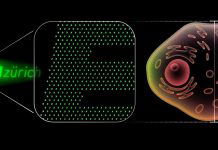
Imagine being able to feel music, touch different fabrics while shopping online, or even get detailed feedback from a virtual doctor’s visit—all through your skin.
Engineers at Northwestern University have created a tiny, wearable device that could make this possible by mimicking the complex sense of human touch.
Most of today’s haptic (touch-based) technology, like in phones and game controllers, can only create simple vibrations.
But our real skin does much more—it feels pressure, stretching, twisting, and different textures.
The new device developed by the Northwestern team goes far beyond basic buzzing. It can press, pull, slide, twist, and even stretch the skin in multiple directions, creating a much more realistic sense of touch.
This small, wireless device sticks to the skin and uses a magnet and tiny coils to create force in any direction.
It’s powered by a small rechargeable battery and connects to phones and virtual reality (VR) headsets using Bluetooth.
Because it’s compact and light, it can be worn anywhere on the body or combined with other similar devices for full-body touch feedback.
“It’s like giving digital experiences a sense of real life,” said Professor John A. Rogers, who led the project. “Most current haptic devices only poke the skin. But skin can feel so much more. Our goal was to make a device that can create all kinds of touch sensations, just like real life.”
This breakthrough could make a big difference in many areas. It could improve virtual reality experiences, help blind people feel their way around, or even let people with hearing impairments feel the rhythm of music through their skin.
The technology is based on a special kind of actuator (a part that moves) called a full freedom-of-motion (FOM) actuator. It can move in any direction and at different speeds. This allows the device to create many types of sensations—like pinching, tapping, or squeezing—by adjusting how and where it moves the skin.
To make this work, the team used advanced models to design the most efficient shape and movement for the actuator. They even added a motion sensor to track the device’s position and movement, helping it react accurately to the user’s actions.
One amazing use the team tested was converting music into physical sensations. By changing the speed, direction, and intensity of vibrations, they made it possible to feel different instruments and rhythms through the skin.
“This device helps bridge the gap between the digital and real world,” said Rogers. “It brings touch into technology in a way that feels natural and exciting.”



